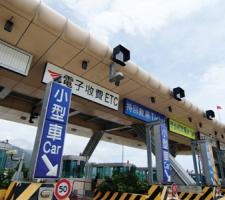
In June, ITS Taiwan will host the 11th ITS Asia Pacific Forum and Exhibition. Dr. Bert J. Lim, president of the World Economics Society and a member of the local organising committee, provides an insight to ITS development in the country. Many of the thought-provoking issues he raises could be applied equally to most countries around the world
Governments need to assume a far greater leadership role, not just in ITS R&D, but also ITS deployment. In the case of Taiwan, it is time for the Ministry of Transportation and Communications to view ITS as the 21st century, digital equivalent of the national highway system.In the past, the Executive Yuan (executive branch of the government) took the lead in setting a vision for the highway system, developing standards, laying out routes and funding its construction. Just as building the national highway system did not mean an abandonment of the role of states, neither does this new role; but just as building the national highway network required strong and sustained central government leadership, so too does transforming our nation's surface transportation through ITS.
Transportation systems are networks, and much of the value of a network is contained in its information context. This information can be used both to maximise the operational performance of the transportation network and to move towards performance-based funding for transportation systems. ITS also represent an emerging new infrastructure platform, from which a whole host of new products and services are likely to emerge, many which can barely be imagined today.
Superior cost-benefits
Intelligent transportation systems deliver superior cost-benefit returns when compared to traditional investments in highway capacity. Overall, the cost-benefit ratio of systems operations measures (enabled by intelligent transportation systems) has been estimated at about 9:1, far above the addition of conventional highway capacity, which has a cost-benefit ratio of 2.7:1.Despite their technical feasibility and significant cost-benefit ratios, many nations under-invest in ITS, partly because there are a significant number of challenges involved in development and deployment. While some systems, such as ramp metering or adaptive traffic signals, can be deployed locally and prove effective, the vast majority of ITS applications - and certainly the ones positioned to deliver the most extensive benefits to the transportation network - must operate at scale, often at a national level, and to be effective must involve simultaneous adoption by the overall system and by individual users. This raises a unique set of system interdependency, network effect and system coordination challenges.
For example, drivers are not likely to demand onboard units capable of displaying real-time traffic information if that information is not available.
Many ITS systems work optimally at scale. To take another example, it makes little sense for cities to independently develop a Vehicle Miles Travelled (VMT) usage-fee system because, in addition to requiring an onboard device in vehicles (ideally as part of the original factory-installed equipment), VMT requires a satellite system and a back-end payment system, and it makes little sense for cities to independently replicate these infrastructure investments.
'Builders of pieces'
But whether it's with regard to ITS systems that face systemic barriers or those that can be deployed locally, many regions, cities, and counties under-invest in ITS. This happens, in part, because transportation fund¬ing is often allocated without consideration of perfor¬mance, giving transportation planners little incentive to give preference to investments that can have a maximum impact on optimising system performance. Part of the problem is that cities, counties and local transportation agencies in Taiwan were created to build and maintain infrastructure, not to manage transportation networks and services, and thus see themselves as 'builders of pieces' and not 'managers of a system'. They therefore place more emphasis on building new roads than ensuring the system functions optimally.ITS in Taiwan is facing a critical moment of repositioning. It should change the core concept of national development from an operating systems focus into a mobility services focus, and a smart urban focus. Starting in 2010, Taiwan's Government has been focusing on the configuration area of cloud computing, intelligent living parks, i-Taiwan and so on. The major difference compared to previous decades is 'service' rather than 'technology' and 'solution'. How ITS can align with these key innovations is the major task that people in Taiwan have to address now. As to the repositioning from operating system to mobility services, it needs to embrace customer requirements, stakeholder analysis, integrated architecture/infrastructure/platform/content and ICT standards protocols. In other words, enhancing ITS development in Taiwan should facilitate collaboration, and the partnership of government and private sectors, to achieve the right platforms for business enterprises to follow in augmenting derivative and innovative services that can enrich the quality of life for the people of Taiwan.
Mixed signals
For suppliers in Taiwan involved in developing new ITS products and services, both for the home market and for export, the effort entails much higher risk than does development of many other products and services. This is in part because governments, bound by the constraints of government procurement law, are key buyers, and in some countries, such as the United States, they have demonstrated, at best, mixed signals as reliable purchasers.Apart from being generally under-funded, another challenge for ITS projects, in Taiwan and also many other countries, is that they often have to compete for funding with conventional transportation projects - fixing potholes, repairing roads, building new ones and so on - that may be more immediately pressing but don't deliver as great long-term returns. Finally, Taiwan ITS also faces a range of institutional and organisational barriers, including limited understanding of the technology and jurisdictional challenges, such as which level of government (national, county, city, public authority, or intergovernment compact) has responsibility for, or jurisdiction over, ITS deployments.
In contrast to the leading countries in the ITS arena, Taiwan lags in ITS deployment, particularly with regard to provision of real-time traffic information, progress to date on vehicle-to-infrastructure and vehicle-to-vehicle integration, adoption of computerised traffic signals, and maximising the effectiveness of its already deployed ITS systems.
Pockets of strength
The 2011 ITS AP Forum will be held in Grand Hi-Lai Arena, Kaohsiung, Taiwan from 8-10 June 2011, the second time that the event has been held in Taiwan. Apart from a full programme of event activities, participants will have the opportunity to enjoy a range of technical tours, explore the Transportation Bureau, visit the Mass Rapid Transit System, and take the solar-powered sightseeing boat in Kaohsiung.
• Full information on the event is available at:
While Taiwan certainly does have small pockets of strength with regard to ITS in particular regions and applications (including the use of variable-rate highway tolling, electronic toll collection, certain advanced traffic management systems such as ramp metering, and an active private sector market in telematics and travel information provision) overall the implementation of ITS varies significantly by the city and county, thus tending to be sporadic and isolated and not yet connected into a nationally integrated 'intelligent transportation system'.
But that's likely to change. Over the next five years, Taiwan is poised to invest more than USD$63.9 billion on the nation's surface transportation infrastructure and this might be enhanced by USD$58.7 billion of new derived investments from the private sector. Intelligent transportation systems must be a critical component of these investments in order to maximise the operational performance of the transportation system and attain the significant benefits existing in the emerging national ITS-related industries.












